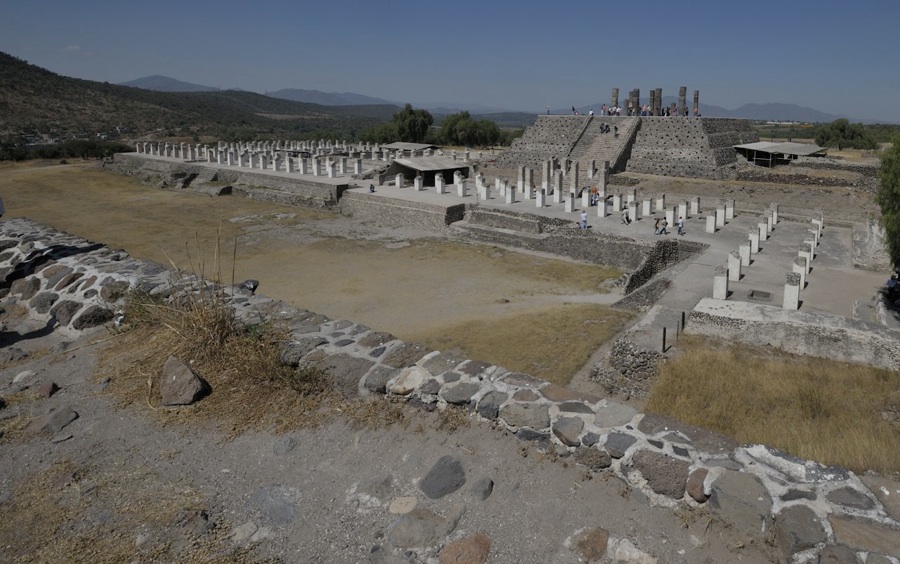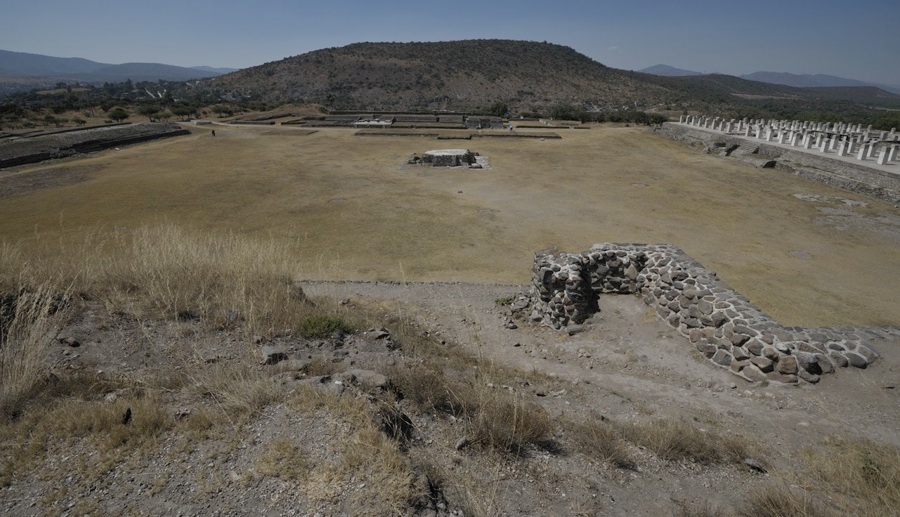After visiting Teotihuacan for 2 days, Enrique and I went to visit the Toltec city of Tula (which the Toltecs supposedly called Tollan). After seeing Tula, you can tell how so much the Toltec part of Chichen Itza is just a copy of Tula. the energy at this site felt very harsh and rigid and dense and uncomfortable. I did not enjoy visiting this place.
According to the INAH Plaque accompanying this site, Tula was 1 of ancient Mexico’s most important cities. Tula fluorished for more than 4 centuries. In the year 1,000 A.D., Tula was a metropolis of 10s of thousands of people spread out over 16 square kilometers (6 1/4 square miles). the city had plazas, pyramids, palaces, vast complexes of artificial terraces, canal systems, drainage systems, streets, boulevards, and bridges over the nearby Tula River, which allowed the inhabitants to move between the neighborhoods of both parts of the city. The large main plaza, with enormous platforms, stairways, altars, halls, palaces, and ball courts, was located at the city’s highest point, thus dominating it. The main plaza was the city’s religious, political, and administrative center. The plaza’s 2 massive pyramids, which were visible from almost any point in the city, were adorned with sculptures and polychrome bas-reliefs.
According to the LONELY PLANET Guide to Mexico, 9th Edition, published September 2004, ISBN 1-74059-686-2, Page 182, Tula was an important city from about 900-1150 A.D., reaching a peak population of 35,000 people. The inhabitants abandoned Tula in the early 13th Century, seemingly after the Chichimecs destroyed it.



